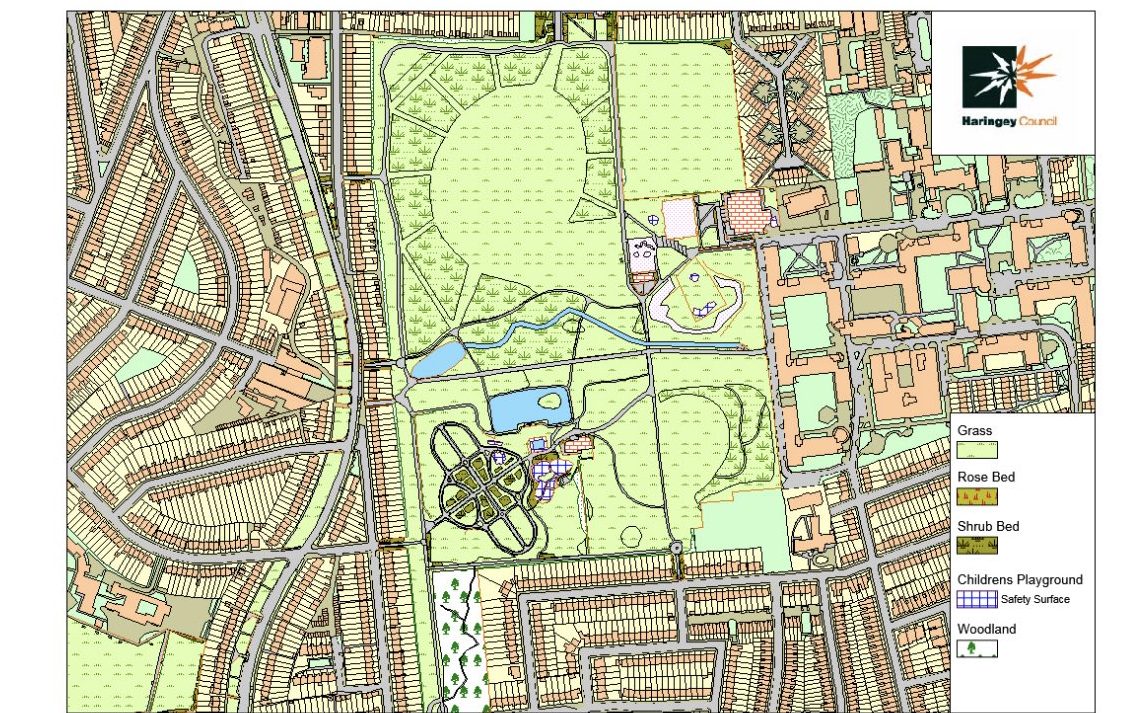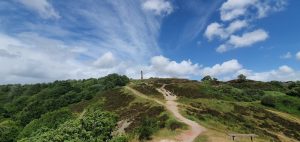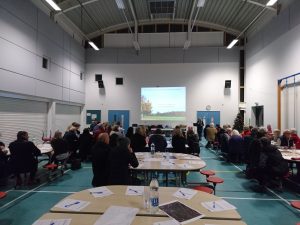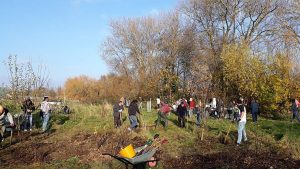Management Plans are important because they create a written plan of action that allows Friends groups to be involved in advocating park needs. You can include aspirations such as increasing biodiversity or improving accessibility if your space needs new paths and signage.
There are many reasons that parks need Management Plans; it could be to obtain Green Flag standard or to bid for substantial Lottery funding or to make the Council more accountable for works and future plans. A Management Plan becomes a resource which can be passed on if there is a change in staff or third-party maintenance teams.
Management planning is a useful process because it accurately documents the current condition of a site and also critically evaluates how the space and its management systems are performing. With many parks and green spaces suffering long-term neglect and lack of improvements due to government austerity cuts, a good Management Plan can help bring focus to a community green space. Many boroughs will have management plans for all parks, others are more selective. A good Management Plan will often include a maintenance plan within it.
FURTHER READING: A Case Study featuring Friends of Troopers Hill, Bristol, showing how their Management Plan has helped them achieve lasting success.
Other documents which sites may use:
Biodiversity Action Plan. These are important to help meet key biodiversity targets and can work alongside the Councils’ Climate Change Strategy in order to meet conservation targets and halt species decline. Take a look at an example from Haringey Council. And here is one from Shropshire Council they have a Biodiversity Action Plan for their Lowland Wood Pasture, Parkland & Veteran Trees.
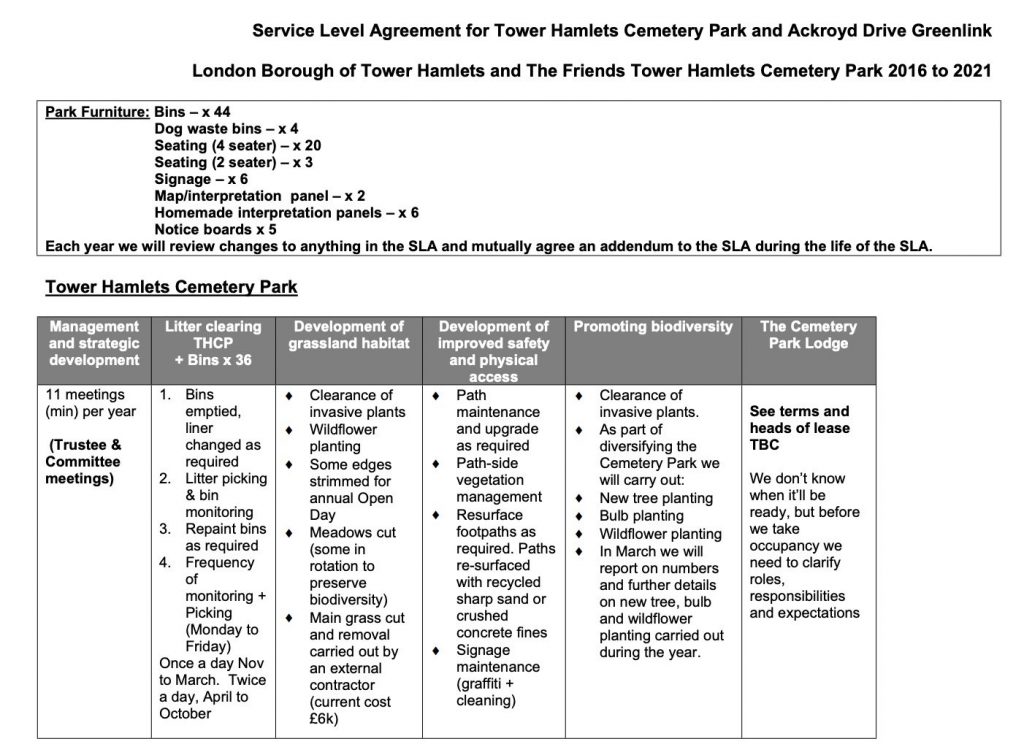
Service Level Agreement. This is a document many Local Authorities use to detail arrangements and expectations regarding the services they offer. Friends Groups are most likely to be interested in SLAs regarding maintenance contracts or perhaps catering services offered at a community hub. If a Friends Group helps run a service or building then SLAs are important documents to ensure each partner knows their responsibilities. Potters Fields was leased by Southwark Council for 30 years to the Potters Field Management Trust in 2005. The lease has an accompanying Service Level Agreement, which includes detailed specifications on cleaning, health and safety, maintenance, gardening and hiring the park for events.
Conservation Area Plan. Often used for sites which are “of special architectural or historic interest the character or appearance of which it is desirable to preserve or enhance.” See this extract below from the Trafford Council plan for ‘Barton Upon Irwell Conservation Area’, which is “highly significant for its industrial and engineering history” it has a historic graveyard and significant green space, but this has been allowed to become overgrown “creating a general air of neglect.”
“Conservation Area designation recognises the unique quality of an area as a whole. It is not just the contribution of individual buildings and monuments, but also that of features such as topography, layout of roads, pathways, street furniture, open spaces, and hard and soft landscaping which assist in defining the character and appearance of an area. Conservation Areas identify the familiar and cherished local scene that creates a sense of place, community, distinctiveness and environment.
Trafford Council, Barton Upon Irwell Conservation Area
Masterplan. This may be something a Friends Group creates for their site and is a really useful document, especially if there is no Local Authority plan already in place. A Masterplan is often produced after a community consultation, so that it reflects the true needs of local people and site users. It is a long-term planning document that provides a blueprint to guide future growth and development. It usually includes analysis of the size and current land use of the park/greenspace and how it connects with the surrounding area. Recommendations and proposals for preferred ways a site may be utilised are presented in a concise and clear way, often using aspiration visualisations to give all stakeholders a view of what a site could become. It often clarifies who the main site users and stakeholders are and what their roles may be. Transportation links, community facilities and links with other interested networks may also be highlighted. Take a look at how the Friends of Latchmere Rec in Kingston-upon-Thames created a Master Plan for their site following comprehensive community consultation. The FoLaR Master Plan takes the form of a map of the site, it features a route network of desire lines which allow visitors to explore the different areas of the green space, each defined by a specific character or activity.
Plan Contents
Sometimes a Management Plan will include wider topics such as information regarding the demographics of the area. If your Friends group are actively engaged in preparing the Management Plan, it makes sense to include current and proposed levels of volunteering and community engagement on the site and how this will be managed and maintained in the future.
Some parks and green spaces have their own commercial income streams, such as from football pitch hire, a café or visitor centre. Information on the operation of these can be included in your Management Plan. Depending on the Council’s own strategy, some Management Plans are written in-house whereas others are written by contracted individuals.
Here are a few examples where Management Plans are working:
Lordship Rec in Haringey, North London.
Received four million pounds lottery funding as a result of their Management Plan. They co-wrote the plan with Haringey Council, which meant that the plan was not simply a tick-box activity but a collaborative effort. The plans are easily available to view and is a “live” working document, so if anything needs to be changed it can be added as an appendix, such as the section pertaining to Lordship Rec’s wildflower meadow. Lordship Rec’s plan is a 10 year plan and the Friend’s co-manage the park with Haringey council. You can view the Lordship Rec Management Plan 2015-2025 here.
Friends of Tooting Common have a Management Plan which was prepared by Wandsworth Council and LUC consultants (Land Use Consultants). Wandsworth Council applied for Heritage Lottery Funding to develop plans for the “Tooting Common Heritage Project”. They then submitted and won a second grant which funded the 3 year project (2016-2019) that explored the cultural and natural heritage of Tooting Common. This shows the benefit of having a well written Management Plan.

Heritage Lottery funding will not be released if the amount applied for is over £250,000 unless a Management Plan has been written using their guidance (2012). So we recommend taking a good look at their guide and downloading it as its a fantastic reference.
“We will expect your organisation to adopt your management and maintenance plan, to integrate it into your existing policies for management and care, and to provide financial resources to implement that plan for 10 years after project completion.”
“We want our investment in your project to have a wider impact by acting as a catalyst for a ‘step change’ in the way your site is managed.
Heritage Fund, Management and maintenance plan guidance for landscapes, parks and gardens
For example, the complete revitalisation of an historic cemetery is an ideal opportunity to critically review not just the current state of its physical condition, but also
- its current and potential benefits for the local community
- how the space is managed and by whom
- how maintenance is to be funded for the long-term future of the site
The Management and Maintenance plan needs to be clear how our outcomes will be sustained in the future beyond the end of the project. The most relevant outcome is:
- The heritage will be in better condition.”
The Tooting Commons’ Management and Maintenance Plan sets out exactly what work is required and a clear schedule of when things will be done. Often conservation of the historic meaning of a park or green space needs to be considered.
Wandsworth Park, London. Friends of Wandsworth Park have kindly shared their latest Management Plan with us, created in 2019. Wandsworth Park is a popular Grade II listed park which has a Green Flag.
Bromley Council would like to make all green spaces in Bromley Green Flag and to make management plans for all the parks and open spaces. They are unsure whether or not community groups need to be involved in the writing of the Management Plan.

Kensington Friends – Hyde Park’s management plan was written in 2006 and is out of date. The group is consulting with their council on the management plan. They noted that the contractors’ agreement isn’t necessarily important/doesn’t impact on the management plan.
Boroughs aren’t legally required to have Management Plans for any of their parks/green spaces, so in order to engage with your Council it is important to have a good relationship with them. The hope it they share your vision for the site and want to improve and maintain it.
Friends of Queen Mary’s Park – Woodland near the park has been left undisturbed, it received £300,000 in lottery funding which allowed open areas to be created in the wood to increase biodiversity and trees have been felled to increase light and encourage renewal. Users have noted that the ‘magic’ has gone from that area and that the natural bio-diversity that existed had been dampened – moral of the story is that care should be taken so that the Management Plan does not lead to a manicured park/green space.
Management Plans can ensure spaces within the site, such as woodlands or wildflower areas, which are highly valued by Friends groups and site visitors can be highlighted and protected. It is important to make sure that the uniqueness of a place is not lost and that any work done is coherent with the park. There needs to be a balance because green spaces often have a wide range of users with different needs.
Feedback from some Friends Groups is that Management Plans can be hugely wordy with very little content. Clear and concise Management Plans could be the way forward.
Haringey Council has a standard Management Plan which can be applied to all of their parks and green spaces. The important part of a Management Plan is that it is tailored to include features for each unique green space and that the community are involved in writing and implementation. If you have a good relationship with your Council, then they can adapt the Management Plan to suit your green space.
A lot of green space maintenance contracts are borough-wide (such as tree officers). Having a Management Plan means that you can empower elective representatives and advocate for services that are needed in your green space, because service requirements have been laid out in the management plan and so need to be fulfilled.
So How Do We Start?
Discuss how satisfied you are with your Friends Group, where do you want to go and what would you like to happen once you achieve your aims? If you have the skills and the time available, Friends Groups can write their own Management Plan and present them to their Council for any amendments.
Plans should be the result of analysis and they should be reviewed regularly. Contracts are usually borough-wide and ideally should define the outcomes. Flexible contracts are often better because when contracts are up for renewal Friends Groups can get involved with the Council and make recommendations.
Park Management Plans have no legal grounds, they are simply a road map showing where you are coming from and where you are going.
Management Plans can bring about consensus and reconciliation and can help to align community, council and contractors. Friends groups can use Management Plans to help these stakeholders work together for the good of the park. However, it takes time to build these relationships.
There is no reason why a service agreement can’t build upon the Management Plan, timing this with a contract renewal can be useful. Friends Groups can assess the quality of work done by the contractors. Friends Groups could participate in partnership meetings with maintenance teams, contractors, council staff and stakeholders to discuss specific topics such as biodiversity.
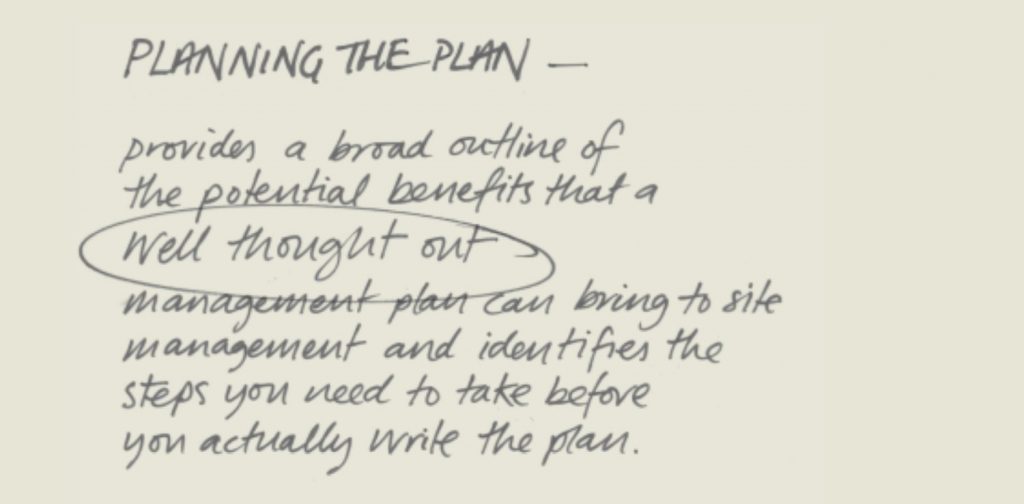
Though produced many moons ago by CABE (in 2011 CABE amalgamated into The Design Council) this comprehensive guide on how to create a park management plan is still incredibly helpful: A Guide to producing parks and green space Management Plans
With thanks …
Much of this article has been taken from the London Friends of Greenspaces Network Committee meeting notes (Management Plans and writing them) from 4 April 2019. They have an excellent website, which is constantly updated and we highly recommend taking a look. This link will take you to more Management Plan examples: http://www.lfgn.org.uk/management-plans/.

